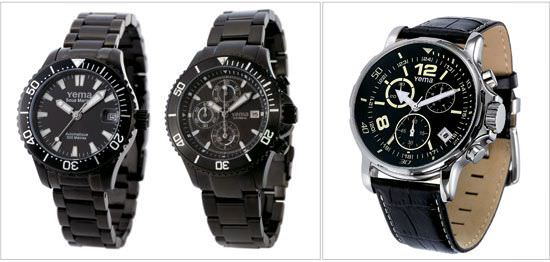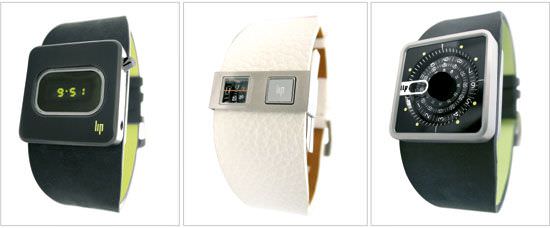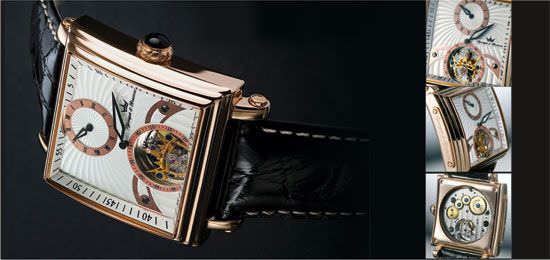This past February, the presentation took place in front of the headquarters of the CPDHBJO, on the Avenue Franklin Roosevelt, in one of those restaurants that, at night, gives the neighbourhood its ‘bling bling’ reputation. Except this time, the meeting was held early in the morning, for an event that was not festive but rather studious.
A French market in full growth…
As happens each year, Mr. Lapipe and Mr. Piquet presided over the event, especially Lapipe, a skilful orator, who knows how to instil his words with a spirit that holds the attention of his audience. This time, the two men were in particularly brilliant form—and, for good reason.
The French watch market recorded a spectacular increase of 11 percent in value during 2007, equal to that realized in 2006. The post-September 11 depression, which saw a drop of 5 percent below zero in 2003, is now merely a bad memory. Last year, the sales volume in the French market reached 13.4 million pieces, 0.6 million more than in 2006, equalling the best results of the 1990s.
The numbers are even more remarkable when you consider the absolute value: 1.225 billion Euros for 2007 in comparison to 1.102 billion in 2006 and 994 million in 2005. The increase was seen across the board, in all price categories, but was greatest in the 100 to 299 Euro range (up 16 percent) and for watches selling for more than 3,000 Euros (up 22 percent). Distributors and retailers are certainly not unhappy.
But these numbers don’t say anything about the local French pro-duction. This topic was not, in fact, even on the breakfast menu. So, one of the journalists had the good idea of asking a question that has not been asked for a while, especially since the French industry has lost so many of its illusions. It was also a question that hurt a bit: “In these figures, how much is due to actual French production?” The stark answer came from Piquet: “Less than 5 percent.”
Clearly, that chilled the coffee. The lion’s share of watch sales came from Switzerland, 75 percent, via the Helvetic nation’s Swiss Made pieces, with the rest of the market having been captured by China. In terms of turnover, the data is even more striking: Swiss watches accounted for 95 percent. So, it would seem that the country of Nicolas Sarkozy is a colony of the triumphant Swiss timekeepers.

YEMA LAB and YEMA CLASSIC
“Swiss Made by the French”
Located in the same Haussmannian building as the offices of the CPDHJBO, the French association for watchmaking and micro-techniques (CFHM) welcomes these sales results with a certain detachment. To each his own job, and the job of Patrice Besnard, the head of the CFHM, is to defend and promote the watch industry. Jovial, with a shrewd eye, and dressed eternally in a bow tie and braces, he looks like he stepped right out of an Agatha Christie novel.
To explain the Swiss hold on the French watch market, Patrice Besnard likes to use the expression: “Swiss Made by the French.” It is a con-venient way to sidestep the issue and affirm that the nationality of the watch is ancient history. “We are speaking about something that no longer exists,” he declares. “Swiss watch, French watch, Chinese watch - all these terms signify very little. The most important factor is the brand, not the place where the watch is manufactured. Each country makes its own contribution to the industry. The results furnished by the CPDHBJO must be taken with care.” He then cites a prestigious French brand from the Place VendÔme—“Don’t write its name,” he asks—whose watches are designed in France and assembled in Bienne, Switzerland from parts that come from all over the world. This French luxury brand contributes to the French industry’s turnover. Stamped ‘Swiss Made’, it is part of the 95 percent of watch sales in France that are due to Swiss manufacturing. Let’s admit, then, along with Besnard, that the criteria of origin, even if they conserve their economic and legal relevance, are not so important in terms of consumption.
Dominance of the brand
In the haut de gamme sector, it is undoubtedly better to speak of bi-national watches: French, even Parisian, for the image of luxury that they evoke; and Swiss, for the technological prestige and legitimacy that the ‘Swiss Made’ label confers.
“In this business, the brand is nonetheless Number One,” insists Patrice Besnard. But he also clearly understands that without the Swiss touch, French brands—as reputable as they are—would lose their attractiveness. This is where the concept of ‘Franco-Swiss watches’ comes into play. It is a way of keeping up appearances.
In human terms, however, let’s leave the appearances and talk about reality. This is no longer about nationalities or even brands, but rather watchmaking in the noblest sense of the word. There truly is a Franco-Swiss reality. Not only do French manufacturers, with 4,800 employees in France, participate in the growth of this French-Swiss ‘couple’ (mainly providing 60 percent of the component parts), but more importantly, approximately 15,000 French nationals work in ateliers located in Switzerland, accounting for one-third of all workers in the Swiss watch industry. This does not even count the number of French managers who head up Swiss companies such as TAG Heuer and Tissot. But, until proved otherwise, it is the money and the management headquarters that control the industry, not the labour force—another point that does not go unnoticed by Besnard. Clearly things are evolving, and he does not exclude that they may evolve in favour of French interests, which he diplomatically places behind the smoke screen of “European industrial logic”, and for which he has not lost hope of slowing the all powerful Swiss watchmaking machine.

LIP
The Swiss must choose their camp
Besnard also sees Europe in commercial opposition to Asia, meaning China. The head of the CFHM asks the Swiss—and not for the first time—to choose their camp rather than play in both fields. Of course, the headquarters of the large Swiss brands are located in Switzerland, but the money knows no boundaries. “The Chinese are beginning to make their market in Switzerland,” he cautions. In the same way that Chinese investors have just acquired, for the first time, vineyards in Bordeaux, they may soon take over one or several flowers of the Swiss watch industry. “Switzerland must strengthen the criteria of ‘Swiss Made’, including the component parts,” warns Besnard, “or Europe will re-establish its custom’s duties.”
But what if we were already way beyond all these quibbles? From his pocket, Patrice Besnard pulls out a photocopy of an advertisement, which seems like a confirmation: Yes, ‘global’ watchmaking is on the move and nothing can stop it. This advertisement came from the company, Wolf (Asia) Limited. In a few photographs, it shows the ‘Swiss background’ superimposed over an image of the Matterhorn, the ‘Hong Kong base’ in front of Hong Kong’s skyscrapers, and the ‘Chinese factory’ illustrated by Chinese watch workshops.

YONGER & BRESSON
Virtues of the land
In Switzerland, as in France, villages are resisting the powerful Chinese spring roll. Some people are discovering or rediscovering the charms and virtues of ‘authenticity’. This is notably the case of the company Ambre (Yonger & Bresson, Paco Rabanne and Prima Classe), based in Morteau in the Franche-ComtÉ region. They decided to invest not in ‘Swiss Made’ or even in ‘Made in France’ but rather directly in ‘Fabricated in France’. One of the firm’s directors, Frank Minost, explains, “We are going to develop a production atelier for our brand, Yonger & Bresson, and make our own movements. It is a question of brand identity and added value. We will also create employment,” real jobs in the watch industry, with “people who believe in France.” The higher wages offered in nearby Switzerland do not worry him. “We will find the necessary personnel,” he adds. In BesanÇon, Yema is also getting ready to invest in a production unit.
In Lectoure, in the Gers region, which is appreciated for its gastronomy, especially among British tourists, the brand Lip, owned by MGH, has something more of a ‘concept’ in mind. It concerns a “large cultural project spread over three years,” says a spokesperson for the brand. It is a sort of Park AstÉrix dedicated to Lip, a famous brand that died out several times before being purchased in the 1990s. Today, Lip is located in the South East of France, far from its historic roots. The park in Lectoure will include an auditorium and a hall of time, a sort of ‘gallery of the evolution of timekeeping’. The public will thus be able to observe, behind the glass, 45 watch-makers crafting Lip timepieces, a little bit in the manner of certain trendy restaurants where the guests are invited to watch the kitchen brigade cook their meals. The ‘assembly’ and ‘after-sales service’ facilities will also be recreated in the park.
This project cannot be explained simply by the excellent health of the global watch market. Rather, it testifies to the determination to affirm the French identity of the product, to lift it out of its rut, to restore the honour it lost during the 1970s and 1980s when it sold out to the highest bidder, many of whom were foreign. After all, ‘France’ remains an exportable product. It is not by chance that the MGH is breathing new life into Lip in a region celebrated for its gastronomic tourism. Perhaps the comparison is a bit heavy, but it is local and it is French.
Source: Europa Star April-May 2008 Magazine Issue





